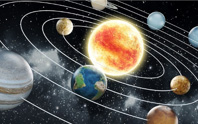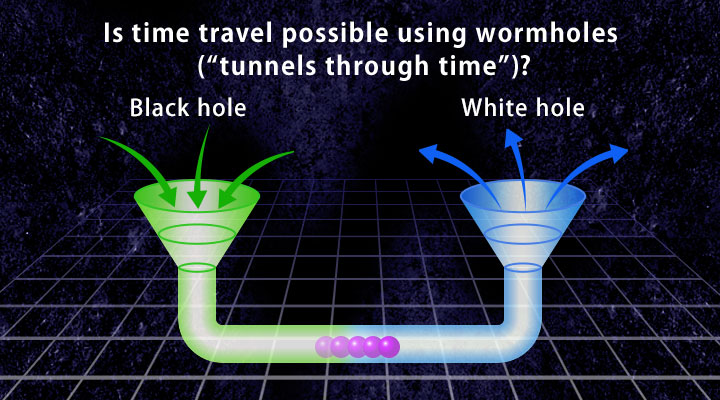We typically use the word “time” (as measured by a clock or watch) to refer to specific instants in the flow of time, or the length of time between two specific instants.
When it comes to the question “What is time?” however, things are not so simple. There are many different angles from which we can approach this theme, which vary greatly between the different fields of psychology, biology, philosophy, natural sciences, physics, cosmology, and so on. There have also been numerous different definitions and ways of thinking about time in the various different eras of history, and so it is difficult to give a sweeping, generalized explanation.
Here, over the course of three separate parts, we will approach the question “What is time?” from the respective viewpoints of five of the below fields; and attempt to summarize, in an easily understandable manner-the representative ways in which time is considered in each field:

・Time as it Flows in the Mind and Body (Biological Time)
・Changes in Religious and Philosophical Views of Time
・Newton’s “Absolute” Time (Flows Constantly Everywhere)
・Einstein’s “Relative” Time (Expands and Contracts)
・The Relationship Between Space and Time
The Relationship Between Space and Time
The Birth and Expansion of the Universe and Time’s Arrow

Modern cosmology says that the universe was born out of a state of nothingness, expanding from a single point of extremely high density and high temperature in what we now call a “Big Bang.”
The universe began as a uniform and isotropic space. However, as the universe expanded, the temperature and density in certain parts began to decrease, and gradually the stars and galaxies began to form. Later, with the passage of time, black holes—regions of spacetime where the expansion did not proceed in a regular manner, resulting in distortions and tears in the fabric of spacetime—began to form. These developments show that the universe itself originally began in a specially ordered state of low entropy, and has gradually shifted towards a state of high entropy by expanding at an appropriate speed. In other words, the direction of time’s arrow points from a state of low entropy to a state of high entropy. It is said that it precisely this “cosmic expansion at an appropriate speed” that is the ultimate reason for the direction of time’s arrow, and the origin of all concepts of time.
Conversely, we can also say that the beginning of cosmic space and the beginning of time are the same, and that time will continue for as long as the universe itself continues to exist. It is believed that if at some point the universe were to stop expanding and begin to contract, eventually concentrating down to a single point similar to the state in which it began, then cosmic space would come to an end, and at that point time would also end.
Is it Possible to Create a Time Machine?

Modern science takes the stance that travelling to the future is possible, in principle (putting technological issues aside), by travelling into space at close to the speed of light and then returning to earth.
The real problem lies in time travel that defies the arrow of time, travelling back from the future into the past. A number of researchers have studied this theme and several different theories have been published. We introduce two of the most famous and representative ones below.
Dr. Kip Thorne’s Wormhole Theory, and Other Theories
As the complete opposite of black holes, there are also tears in the fabric of spacetime that continually spew out matter. We call these “white holes.” Areas of spacetime where black holes (which ”draw in” matter) and white holes (which “spit out” matter) are connected together are referred to as “wormholes.” It is said that because the gravitational forces inside a wormhole are extremely strong, the passage of time would be extremely slow, and so travel times through wormholes would be near zero.
In 1988, the famous American physicist Kip Thorne published a scientific paper proposing that, since passing though a wormhole would enable one to move instantaneously between two points in space which in reality are separated by an extremely great distance, then wormholes would make it possible to travel faster than the passage of actual time; and that the implication of this was that it would be possible to travel back into the past.
Following on from this, in 1991, another American physicist named Richard Gott published a theory of time travel that made use of “cosmic strings.” These cosmic strings are extremely fine are string-shaped objects, with width finer than an atomic nucleus, but with great density of up to 10 tons per cm. They float through space at close to the speed of light, distorting spacetime around them with their strong gravitational forces. Gott’s paper proposed, as suggested by Thorne, that time travel into the past would be possible using these distortions.
Both of these ideas are purely theoretical concepts that stand up as physical theories. Answering the questions of whether these phenomena actually exist and whether time travel using these ideas is technologically achievable will require much additional research.
The Law of Causality and Parallel Worlds

The famous British astrophysicist and cosmologist Stephen Hawking is one of many who rejects theories of time travel. The basis for his denial of such theories is the Law of Causality, a fundamental principal of natural science that says that an effect can only occur as the result of a cause.
In other words, Hawking argues that time travel into the past is not possible because there are no strong theories to effectively overturn time paradoxes based on this law of causality—such as those sometimes seen in movies, where someone travels back in time to the past and changes history, thereby changing the present.
Some supporters of the possibility of time travel into the past have explained away conflicts with the Law of Causality using the concept of parallel worlds, an idea from the world of quantum mechanics; a theory of microscopic (subatomic) physics.
This theory says that, if we were to travel back in time and change history, time would split at that point, and a separate future would begin, in a parallel world running parallel to the future from which we had originally come. However, it might be overly rough to apply this theory of tiny fundamental particles of matter to the wider world in which we live.
Cosmic Time and Cosmic Clocks

Time on earth today is not measured by observations of the diurnal motion of stars and other celestial bodies using the rotation of the earth on its own axis. International atomic time is determined by comparisons of proper time as measured by atomic clocks loaded onto the various GPS satellites. These clocks have ultra-high accuracy, with errors of one billion of a second.
Meanwhile, outside of our solar system, scientists have observed neutron stars that produce regular pulses of electromagnetic radiation (such as radio waves and X-rays) at various rates in units of milliseconds (one thousandth of a second). These neutron stars are referred to as millisecond pulsars (MSPs). In millisecond pulsar in particular, named PSR B1937+21, emits pulses at a stable rotational period of approximately 1.6 milliseconds. The uncertainty in its period is said to be around one hundred-trillionth of a second.
Because of this high stability, research has now begun into the possibilities of correcting errors in international atomic time using millisecond pulsars; or, in other words, research and development of pulsar clocks with even higher accuracy than atomic clocks.
Today, for the convenience of people living on earth, we use international atomic time on earth as the coordinate time for our entire solar system. Originally, however, depending on a planet’s relative position in the vast expanse of cosmic space, the passage of proper time on other planets—such as Mars and Jupiter—should differ.
In the future, when the scope of humanity’s activities in outer space expands and we begin to visit other planets like Mars and Jupiter more frequently, it may become necessary to create clocks especially for use on those planets, in which the frequency of the atomic clock or pulsar clock has been shifted in advance from the coordinate axis of the earth to that of the relevant planet. Discussions may also arise regarding the need to create a new “solar system standard time” (instead of earth standard time) that considers all planets in the solar system equally.
Reference Literature
・Dōshite jikan wa nagareru no ka (Why Time Flows),Toshifumi Futamase, PHP Shoseki
・Newton Supplement: What is Time?, Newton Mook, Newton Press
・Zukai zatsugaku: Jikanron (Misc. Studies w/ Pictorial Explanations: Theories of Time), Toshifumi Futamase, Natsumesha
・Zō no jikan, nezumi no jikan (Time for Elephants and Time for Mice), Tatsuo Motokawa, Chūkō Shinsho
・Dōgen Zenji no jikanron (Dōgen Zenji’s Theory of Time), Tairyū Tsunoda, Komazawa University
・1-byō tte dare ga kimeru no? (Who Decides How The Length of 1 Second), Masami Yasuda, Chikuma Primer Shinsho



